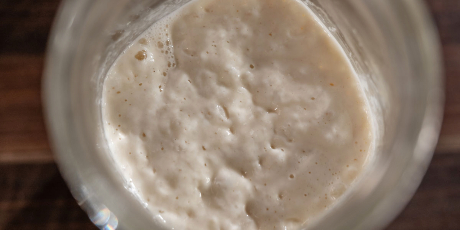
You absolutely can purchase a starter over the interwebs, or, if you’re lucky, acquire one from a family member or friend. But you don’t actually need to: All you need is flour and water and, of course, yeast and bacteria, which are literally EVERYWHERE. There are a lot of different ways to do this, but this method has worked consistently in our test kitchen and builds a robust and flavorful starter.
Yield: 250 grams
ingredients
To Begin
For Daily Feeding
directions
Special equipment: scale with tare function; quart-sized, wide-mouthed glass jars with lids.Cook’s NoteIf your culture isn't showing signs of life after 3 days, go ahead and start feeding. If, after a few more days, nothing happens, start over and place the culture in a different part of your home.
Mix together 125 grams flour and 125 grams water with a clean hand in a medium glass bowl. Cover the bowl with a tea towel and let sit undisturbed at room temperature until the mixture is full of bubbles and has nearly doubled in size, usually 2 to 3 days. During this time, yeasts and bacteria from the air and from the flour and probably from you will set up housekeeping in the bowl (see Cook’s Note).
Peel back any crust that may have formed and transfer 20% of the culture (50 grams) to a clean, wide-mouthed jar. Stir in 100 grams flour and 100 grams water, loosely screw on the lid and stash at room temperature for 24 hours. (The culture will have a stinky-sour smell at this point.) Discard the rest of the original mixture.
Repeat step 2 every 24 hours for 5 days. By then the culture should smell yeasty-sweet-sour, which means you’re ready to put the starter to work.
